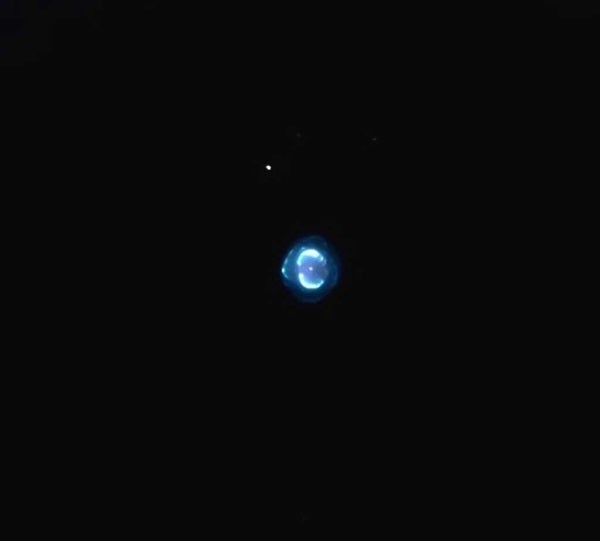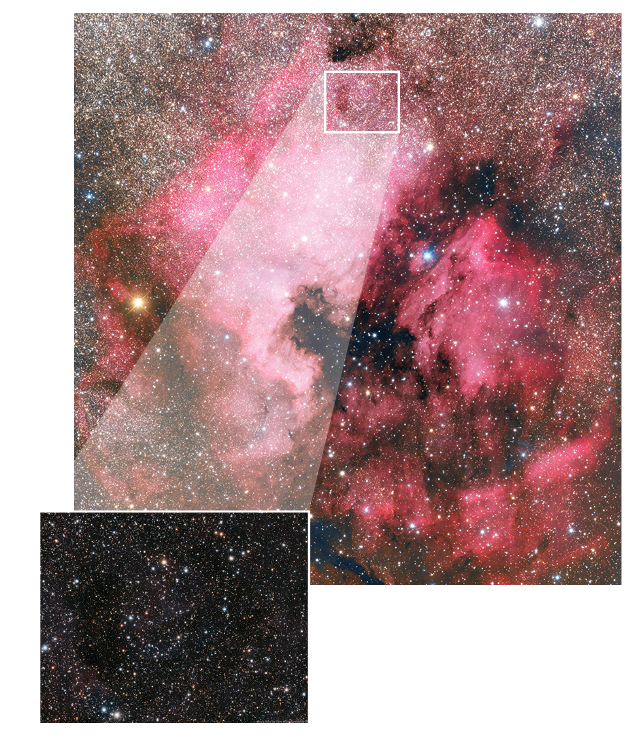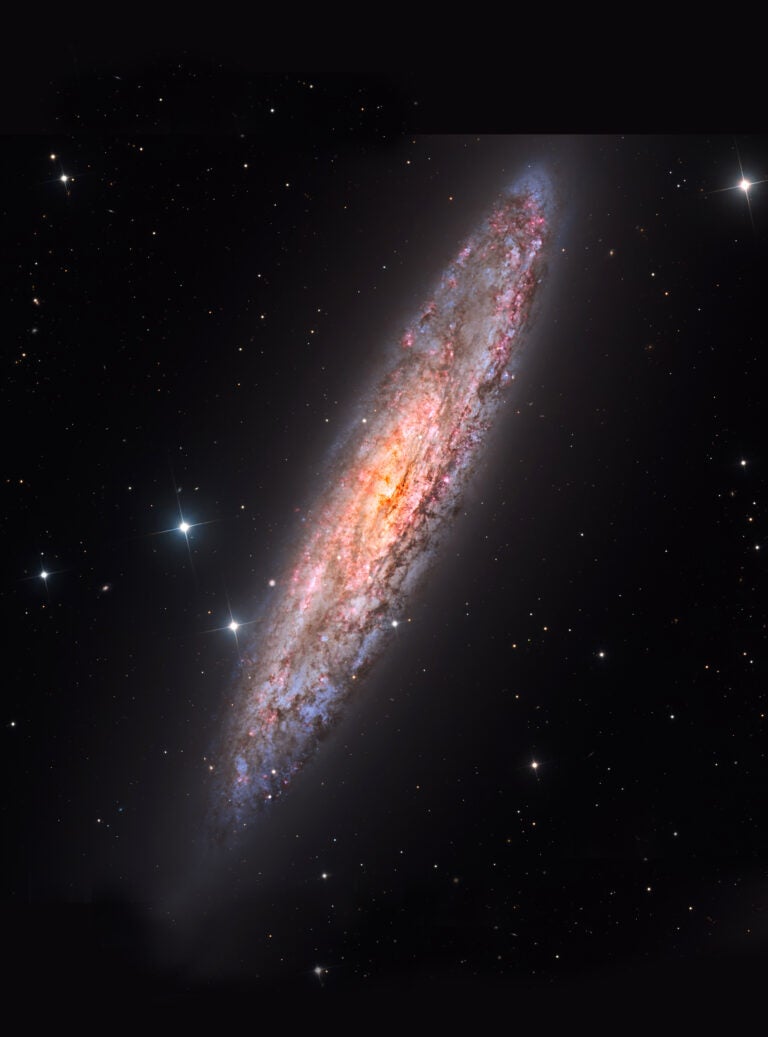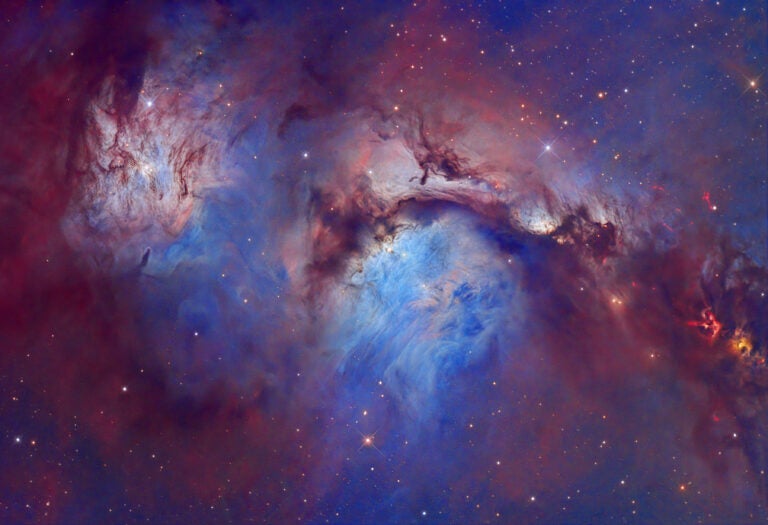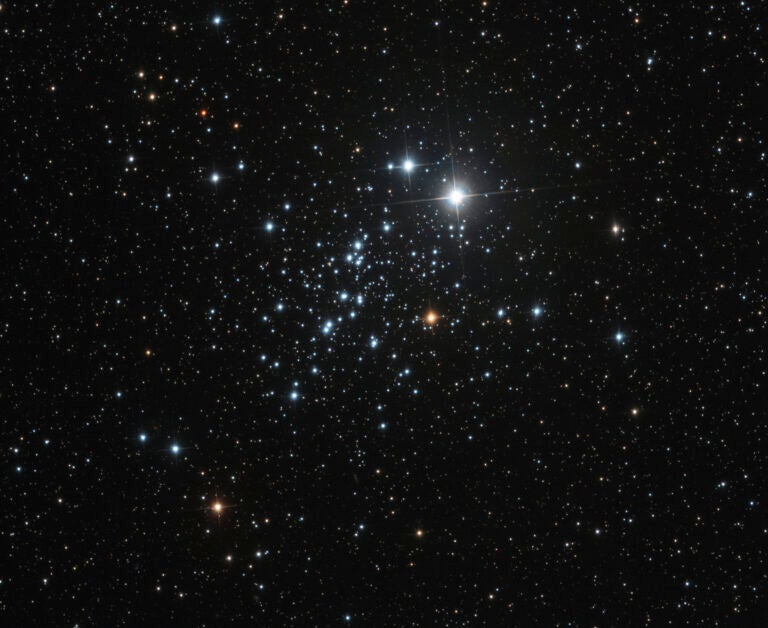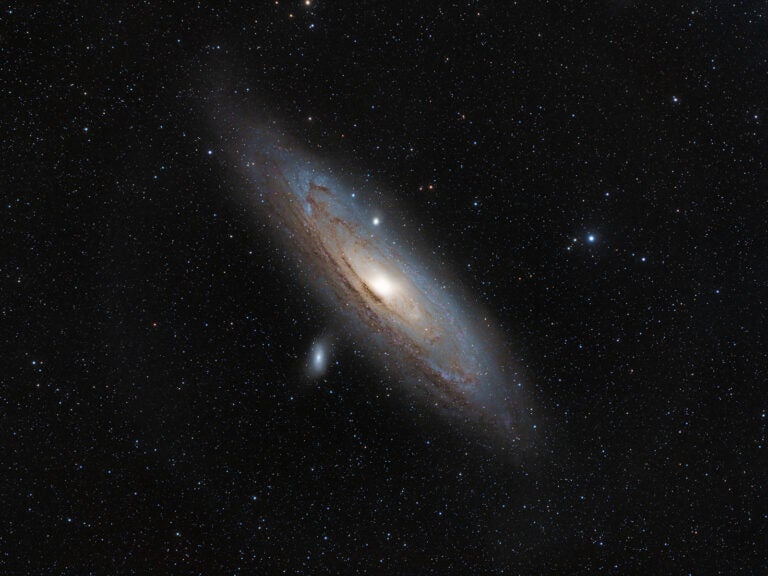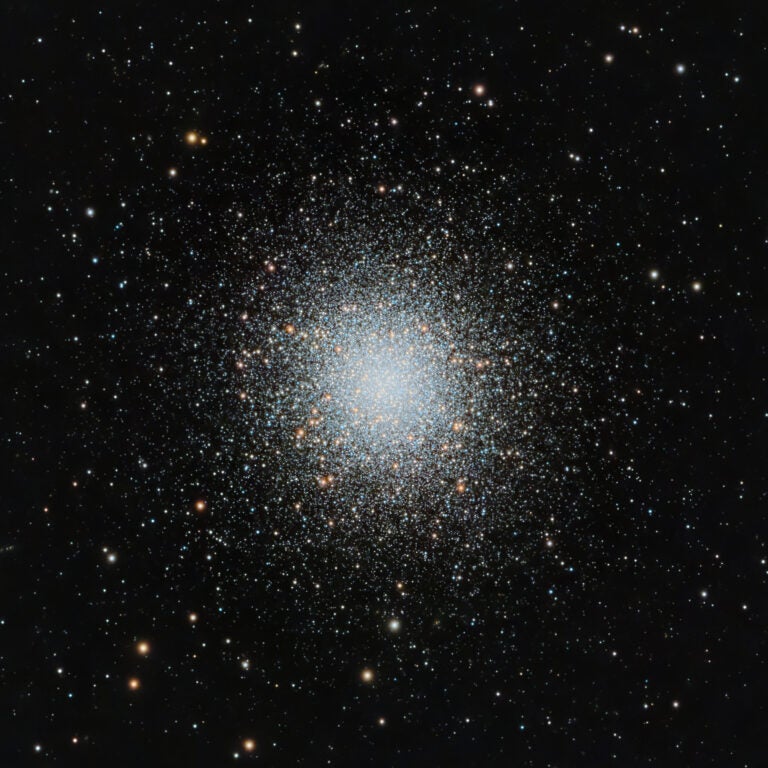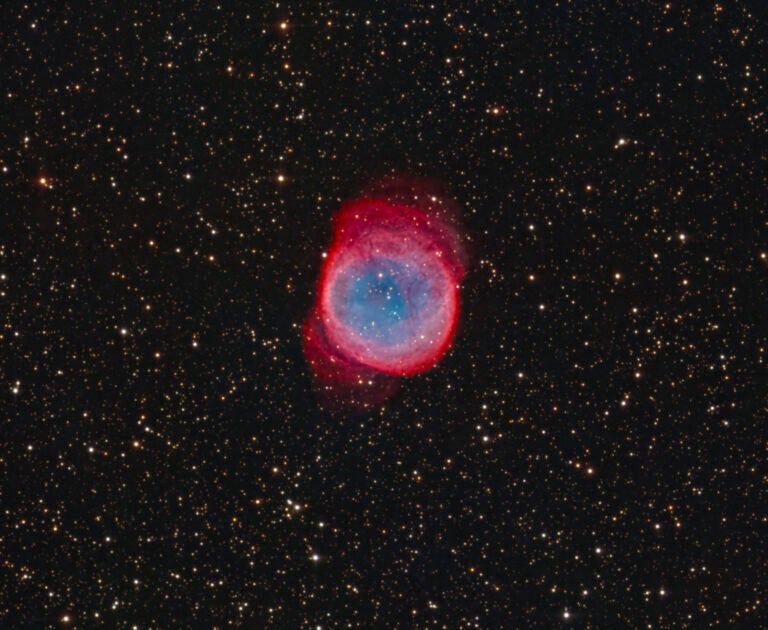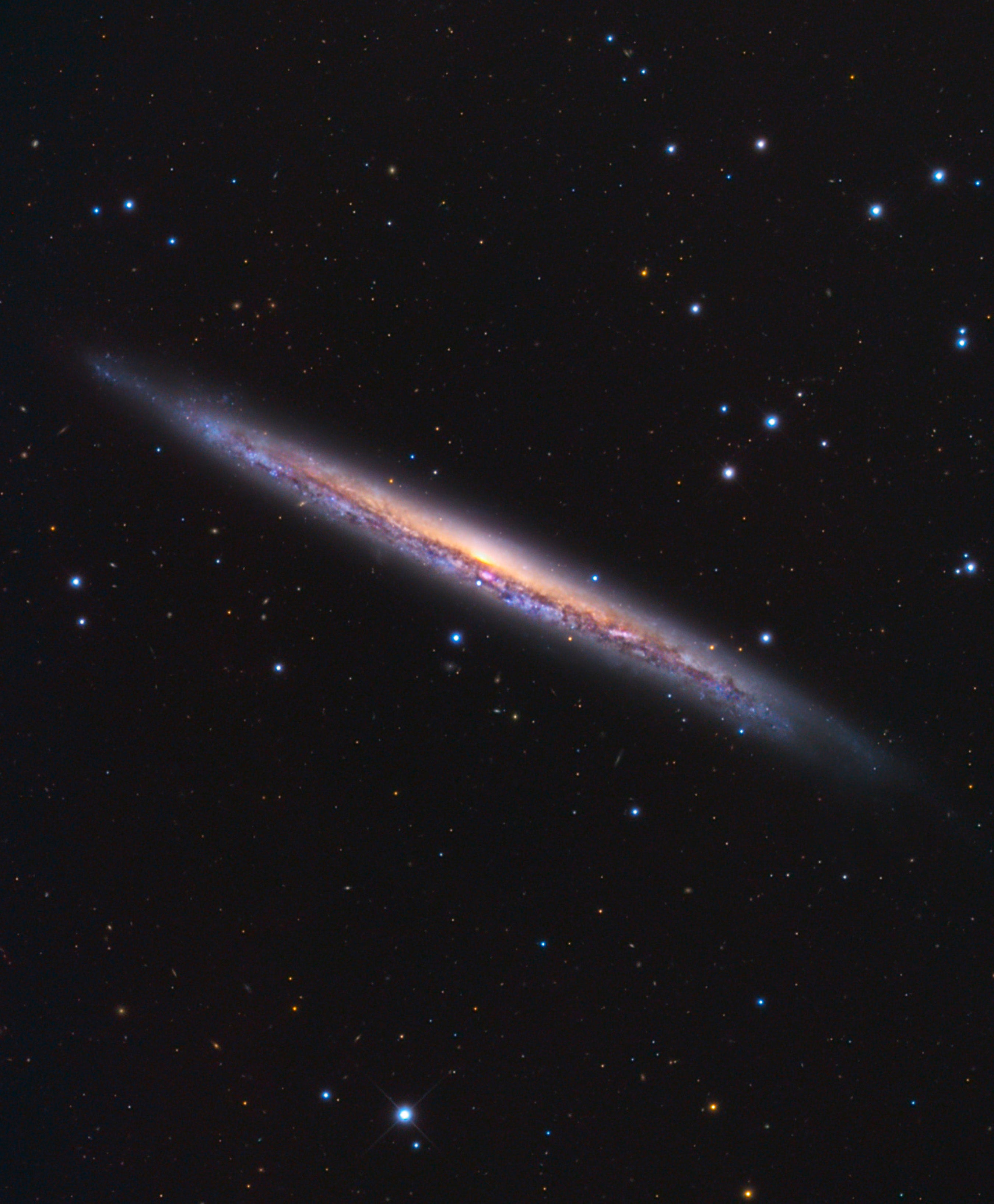
Many amateur astronomers start observing with the Messier catalog, a list of “fuzzy” deep-sky targets that present wonderful sights through a telescope. Although Messier objects may be bright and well known, there’s so much more in the sky to enjoy. The following list of beautiful globular clusters, galaxies, and other celestial entities of the spring sky is for the dedicated amateur astronomer who’s ready to take the next step in deep-sky observing.
These targets aren’t too faint, but they are certainly not standouts like M13 or M8, and may not rise very high or at all in northern latitudes. So, move away from the crowd and treat yourself to some lesser-seen wonders. If you observe each one in the order listed below, the latter items lie farther east (and rise later), so you’ll have more time to enjoy them.
Peer into space
Once your telescope reaches ambient temperature, point it at globular cluster NGC 5634 in Virgo. Of the 200 deep-sky objects in this constellation that are brighter than 13th magnitude, this is the only one that’s not a galaxy. It glows at magnitude 9.5 and spans 5.5′. To find it, look midway between Syrma (Iota [ι] Virginis) and Mu (μ) Virginis. Through a 4-inch scope, you’ll spot a relatively bright (8th magnitude) orange star that is not part of the cluster, and a hazy circle of stars that require a larger scope to resolve them into individual points.
The second stop on our list lies in Lupus the Wolf. Barred spiral galaxy NGC 5643 is 2.1° south-southwest of Eta (η) Centauri. A 6-inch scope reveals a magnitude 10.4 disk that is fairly round (5.1′ by 4.3′) and evenly illuminated. If you have access to a larger (say, an 11-inch) scope, crank the power to 300x and see if the northern half of the galaxy looks brighter than the southern half. Then look for the bar, which runs east-west. It’s not easy to see because the spiral arms are just as bright.
Our third target is globular cluster NGC 5694 in Hydra. At magnitude 9.2, this is a bright globular. It lies nearly 2° west-southwest of the 5th-magnitude star 56 Hydrae at the far eastern end of that constellation. The cluster spans only 3.6′ and it contains faint stars that don’t resolve well. If you crank up the power, several superimposed foreground stars will appear.
Slide back into Lupus for open cluster NGC 5749. It glows at magnitude 8.8 and spans 7′. Center on Zeta (ζ) Lupi and then move your scope 4.2° southwest. A small telescope will reveal about a dozen stars, the brightest of which shines at magnitude 9.6. If you move up to an 11-inch scope, you’ll just perceive a new layer of indistinct background stars.
Our next target, also in Lupus, rivals Messier objects in brightness. Open cluster NGC 5822 glows at magnitude 6.5, which puts it in the range of naked-eye sightings by sharp-eyed observers from a dark site. It also sports a diameter of 35′, slightly larger than the Full Moon. To locate it, point binoculars or a telescope 2.6° south-southwest of Zeta Lupi. Use a 4-inch scope and an eyepiece that gives medium power, and you’ll see roughly 50 stars.
Another nice object in Lupus is globular cluster NGC 5824. It glows at magnitude 9.1 and measures 7.4′ across. You’ll find it 5° northwest of Phi1 (ϕ1) Lupi. Insert an eyepiece that gives a magnification around 150x into an 8-inch scope. Look for a packed central region, an irregular edge, and a couple of faint stars in the dim halo.
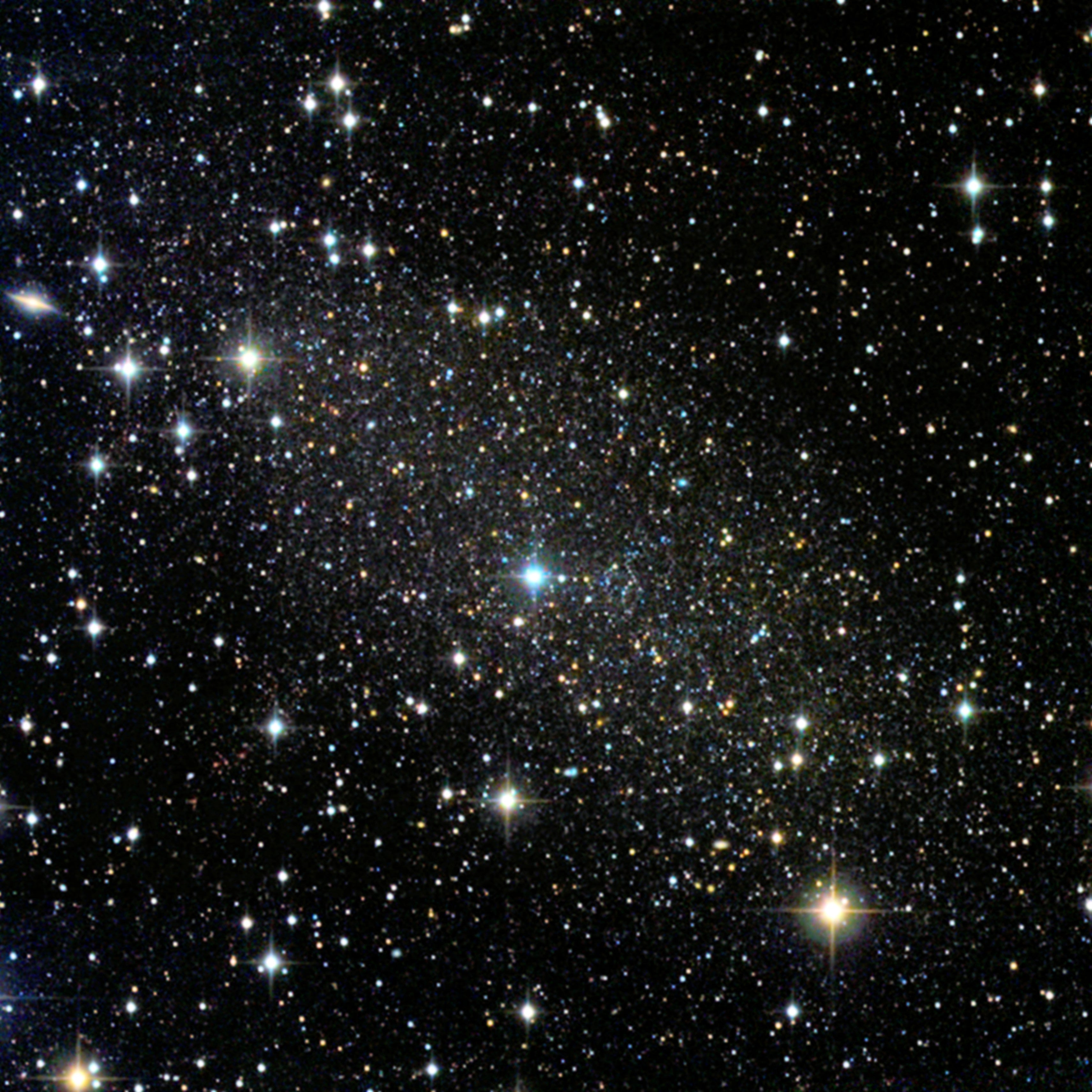
For our next target, the Ursa Minor Dwarf Galaxy (UGC 9749), head to the far north. This dwarf elliptical galaxy lies 4.7° south-southwest of magnitude 3.0 Pherkad (Gamma [γ] Ursae Minoris). It glows at magnitude 10.9 but measures a staggering 41′ by 26′, which means it covers an area 40 percent larger than the Full Moon. Because the UMi Dwarf has a low surface brightness, the bigger the telescope you point at it, the better. Start at a dark site on a moonless night. Use your lowest-power eyepiece and sweep back and forth, searching for a Moon-sized glow that’s ever-so-slightly brighter than the background sky.
As you leave the dwarf elliptical, head south for the true elliptical galaxy: NGC 5846 in Virgo. You’ll find it 1° east-southeast of the magnitude 4.4 star 110 Virginis. It has a slight oval shape, a small bright core, and a wide halo. Through an 8-inch or larger scope at a dark site, this becomes a 2-for-1 treat. NGC 5846 glows at magnitude 10.1 and measures 4′ by 3.7′. But glance just 10′ to the east-southeast and you’ll see spiral galaxy NGC 5850, glowing a bit fainter at magnitude 10.8.
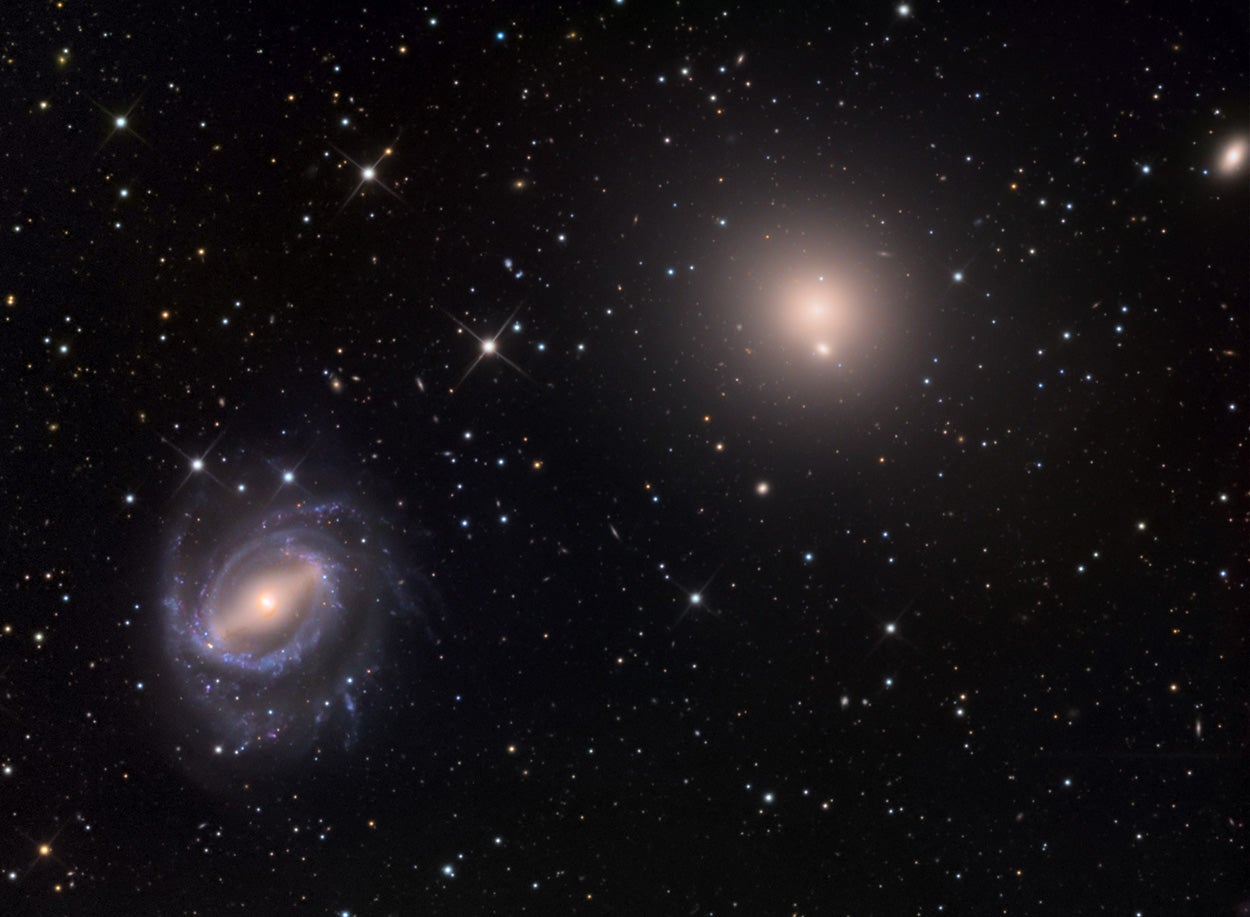
Next up is a personal favorite of mine, spiral galaxy NGC 5907 in Draco. It lies 3° south-southwest of Iota Draconis and glows at magnitude 10.3. But it’s not its brightness that makes NGC 5907 cool. Rather, it’s because this is a true edge-on spiral whose plane tilts a scant 3.5° from our line of sight. It measures 11.5′ by 1.7′, but through a 4-inch scope you’ll only detect half that length. Bigger apertures won’t show more detail, but they will allow you to see more of the galaxy’s length.
As you move through this list, you’ll undoubtedly run across a few objects that will be moderately hard to see. I rank globular cluster Palomar 5 as the most difficult. It lies in Serpens some 9° west-northwest of Mu Serpentis. Pal 5’s magnitude, 11.8, is only part of what makes it a tough catch. With a diameter of 7′, it’s large enough that its surface brightness is quite low. The best strategy for finding it is to point an 11-inch scope toward the area and move back and forth. Use a medium-power eyepiece to see the gradual lightening of the backdrop of space.
Our next object is planetary nebula NGC 5882 in Lupus; at magnitude 9.4, it’s bright enough to appear blue-green to most observers. The most visible section is only 7″ across, but an 11-inch scope at high power (250x and above) will reveal its circular shell. To locate it, look 1.4° southwest of Epsilon (ε) Lupi.
When you’re done with NGC 5882, head north to neighboring Libra for that constellation’s standout deep-sky object, globular cluster NGC 5897, often referred to as the Ghost Globular because it resembles a ghostly image of the much brighter globular M5. That may be true, but with a diameter of 12.6′ and a magnitude of 8.6, this object is big (40 percent the diameter of the Full Moon) and relatively bright all on its own. You’ll find it 8° southeast of Zubenelgenubi (Alpha2 [α2] Librae). The first thing most observers notice is that the stars at the cluster’s core are loosely concentrated. An 8-inch scope at a dark site reveals only a dozen or so suns superimposed on a faint glow.
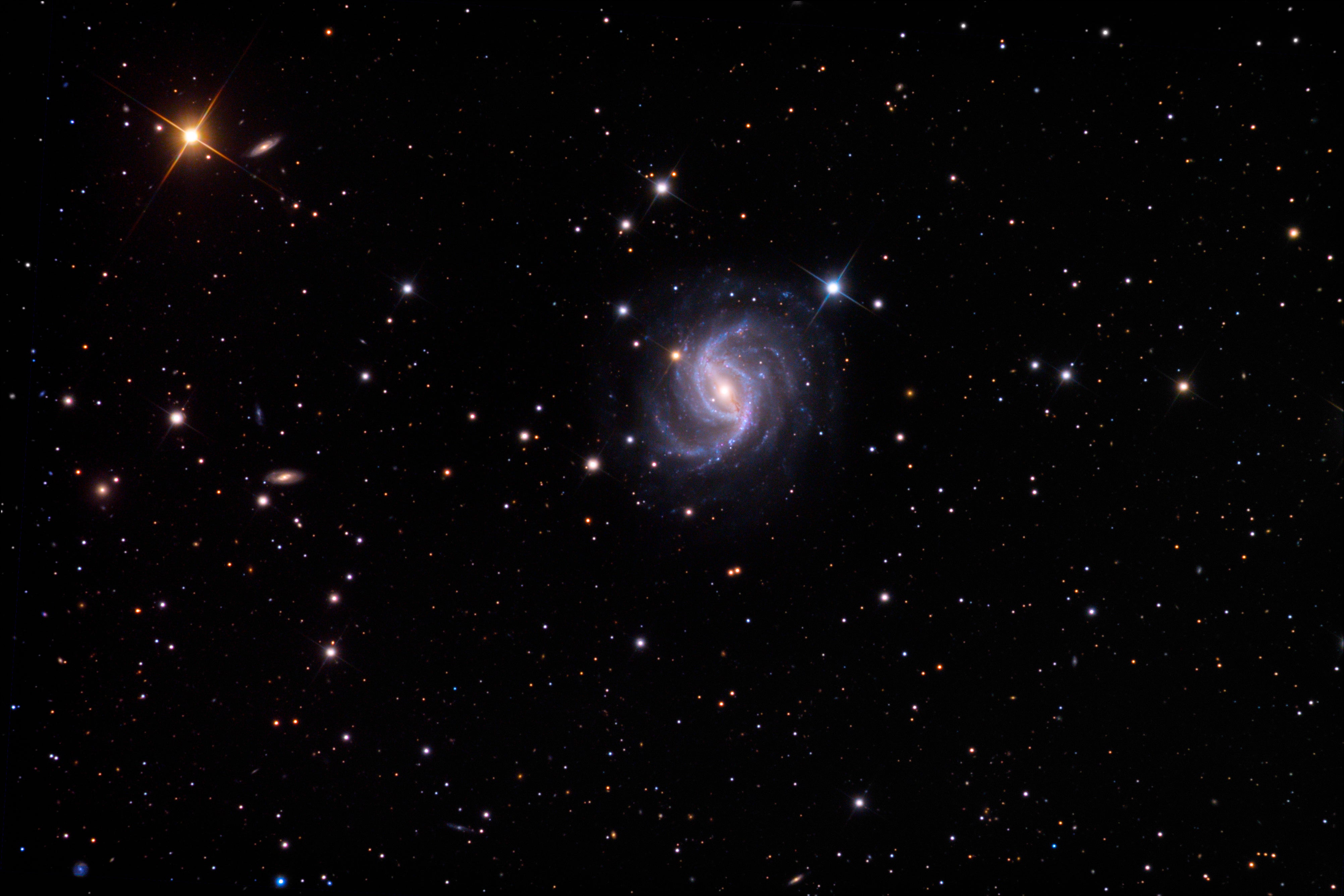
Next, head to Serpens for barred spiral NGC 5921. It lies 5.7° west-southwest of Unukalhai (Alpha Serpentis). The galaxy glows at magnitude 10.8 and measures 4.9′ by 4.2′. If you can view it through an 11-inch scope at a dark site, keep cranking up the power until the bar appears. At first, you might think the magnitude 11.6 star at NGC 5921’s southwestern edge is a supernova. Sorry — it’s just a foreground star.
If your observing site is far enough south, move east of Lupus to the faint constellation Norma and take a look at open cluster NGC 5925. It lies 3.3° southeast of Zeta Lupi, glows at magnitude 8.4, and measures 14′ across. A 6-inch scope reveals about three dozen 10th- to 12th-magnitude stars. Step up to an 11-inch scope, and you’ll see 50 more.
Good old Zeta Lupi also can lead us to our next target, globular cluster NGC 5927. For this one, move 2.9° northeast of the star. This nice object glows at magnitude 8.0 and sports a diameter of 12′. An 8-inch or larger scope will reveal a dense core with a ragged outer edge. Larger instruments will resolve more stars, but the core will look just as dense.
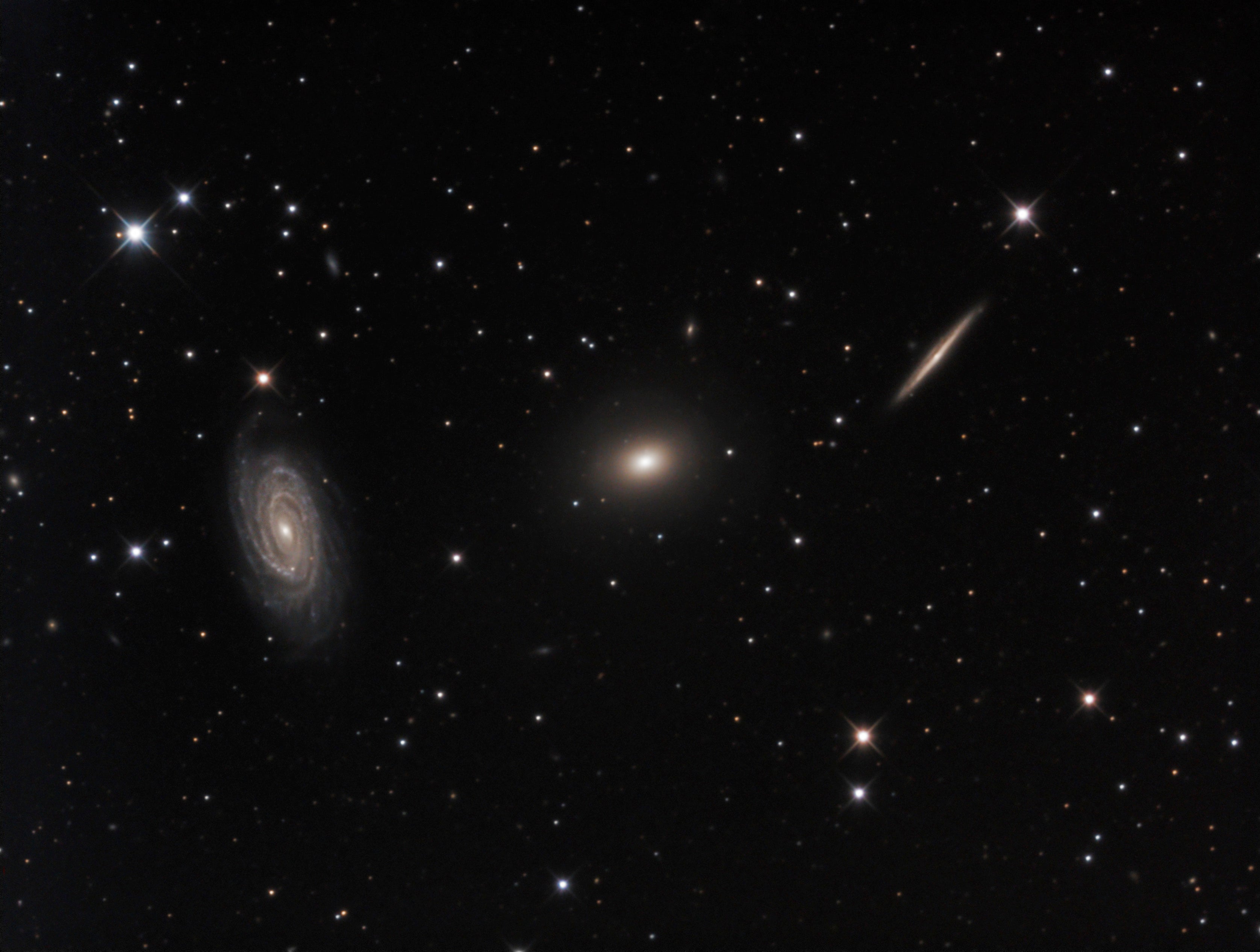
Our next target is actually a threesome of galaxies, sometimes called the Draco Trio. To locate it, aim your telescope 1.8° east-northeast of Iota Draconis. The galaxies lie in an east-west line only 14′ long. None of the objects are bright, so head to a dark site and be patient. Spiral NGC 5985 registers at a magnitude of 14.2, while the elliptical NGC 5982 is magnitude 12.4, and finally, spiral NGC 5981 comes in at a magnitude of 13.6. Through an 11-inch scope, the only one to show detail will be NGC 5982, which measures 5.3′ by 2.9′. Crank up the power and try to detect its smooth, disklike shape.
Next, head south one final time to Zeta Lupi, then move 2.8° west to find globular cluster NGC 5986. It glows at magnitude 7.5 and has a diameter of 9.8′. Through a medium-size scope, this cluster looks irregular and mottled.
Move up to an 11-inch scope, and you’ll resolve several dozen stars.
Travel across the border from Lupus to Scorpius to find the nice open cluster NGC 6124, also known as Caldwell 75. It lies not quite 6° southwest of Mu Scorpii. Sharp-eyed observers can pick out this magnitude 5.8 object with their naked eyes. It’s big, too. With a diameter of 29′, it’s nearly the size of the Full Moon. A 4-inch scope at medium power will let you count 50 stars. Insert a low-power eyepiece, however, and you’ll see that the cluster has a wedge shape that points roughly to the southeast.
Another factor making the view interesting is that NGC 6124 sits in front of a region of dark nebulae. This position makes it stand out well.
Although our next target, globular cluster NGC 6144 in Scorpius, glows somewhat softly at magnitude 9.0, it’s still pretty easy to find. Just center Antares (Alpha Scorpii) and move your scope 0.6° to the northwest. The cluster has a fair diameter — 9.3′ — but it’s a distant object, so stars near its core are not easy to resolve. Use at least an 8-inch scope at 200x, and the outer members should start to pop into view.
The final object on our list is an asterism: the Mini Coathanger in Ursa Minor. Astronomy magazine Contributing Editor Phil Harrington named this asterism because he thought it looked like the Coathanger (Collinder 399), which is in Vulpecula. The Mini Coathanger lies 1.9° south-southwest of Epsilon Ursae Minoris. It’s formed by 10 stars ranging in brightness from magnitude 9.2 to 10.8. This isn’t a tiny object. The Mini Coathanger measures 9′ from the top of its hook to its base, which itself spans 17′, more than half the diameter of the Full Moon.
I hope these 20 under-observed celestial wonders give you as much pleasure at the telescope as they have for me.

